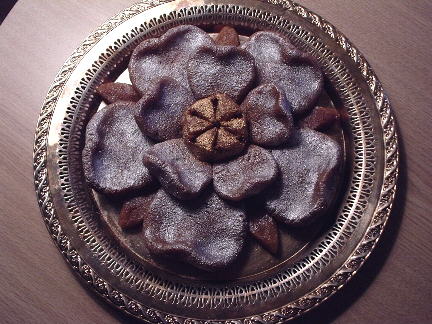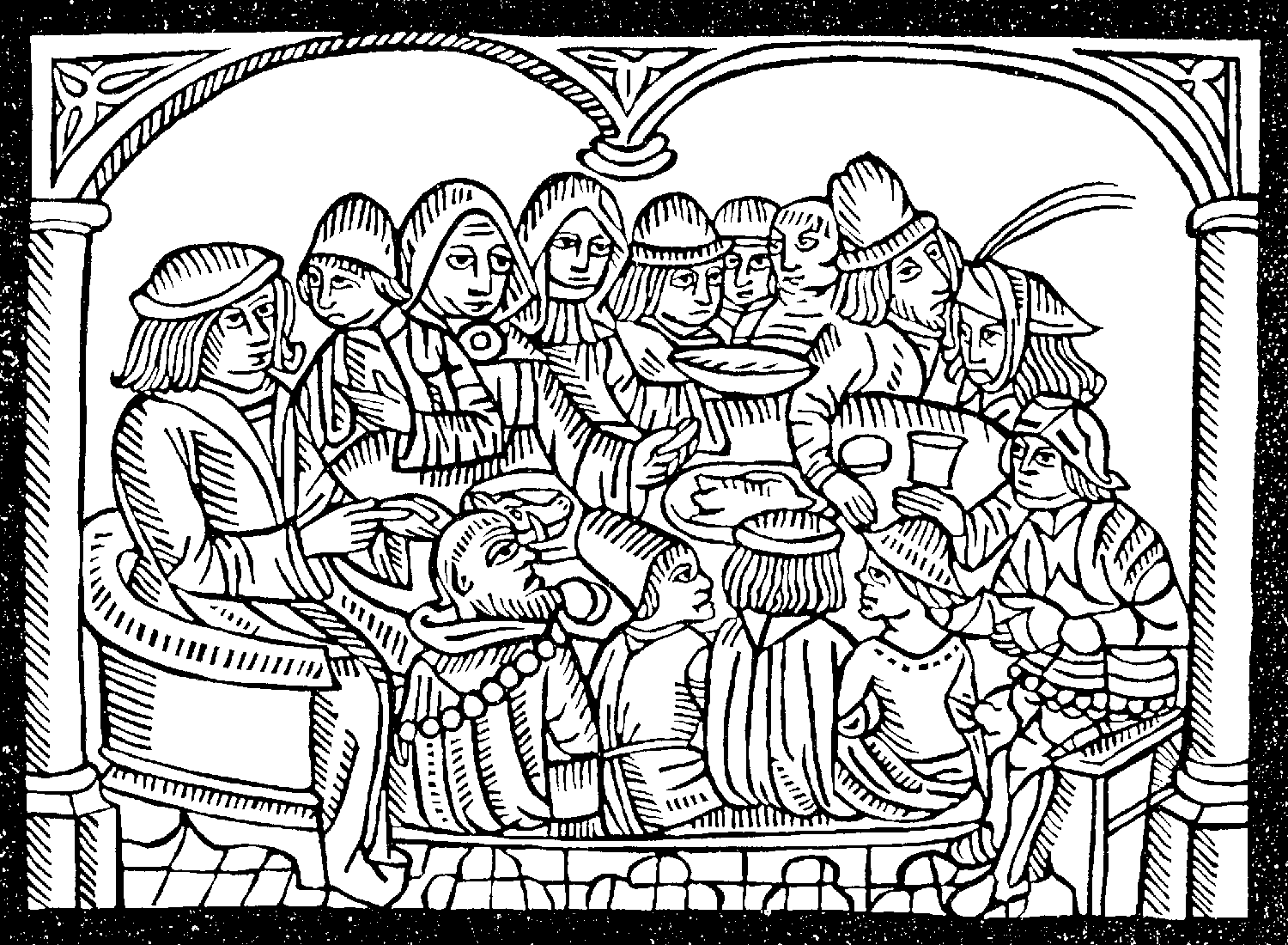
No confection symbolizes the holidays quite like gingerbread in its many forms, from edible houses to candy-studded gingerbread men to spiced loaves of cake-like bread. In Medieval England, the term gingerbread simply meant preserved ginger, and wasn’t applied to the desserts we are familiar with until the 15th century. The term is now broadly used to describe any type of sweet treat that combines ginger with honey, treacle or molasses.
Ginger root was first cultivated in ancient China, where it was commonly used as a medical treatment. From there it spread to Europe via the Silk Road. During the Middle Ages it was favored as a spice for its ability to disguise the taste of preserved meats. Henry VIII is said to have used a ginger concoction in hopes of building a resistance to the plague. Even today we use ginger as an effective remedy for nausea and other stomach ailments. In Sanskrit the root was known as srigavera, which translates to a root shaped like a horn, a fitting name for gingers unusual appearance.
Chinese recipes were developed during the 10th century and by the late Middle Ages, Europeans had their own version of gingerbread. The hard cookies, sometimes gilded with gold leaf and shaped like animals, kings and queens, were a staple at Medieval fairs in England, France, Holland and Germany. Queen Elizabeth I is credited with the idea of decorating the cookies in this fashion, after she had some made to resemble the dignitaries visiting her court. Over time some of these festivals came to be known as Gingerbread Fairs, and the gingerbread cookies served there were known as ‘fairings.’ The shapes of the gingerbread changed with the season, including flowers in the spring and birds in the fall. Elaborately decorated gingerbread became synonymous with all things fancy and elegant in England. The gold leaf that was often used to decorate gingerbread cookies led to the popular expression “to take the gilt off of gingerbread.” The carved, white architectural details found on many colonial American seaside homes is sometimes referred to as “gingerbread work”.
The recipe that I have found that is possibly the most accurate from the time period comes from Two 15th c. Cookery-Books by Thomas Austin, 1888. This book is compiled from several period English manuscripts, most notably Harleian MS. 279 and Harleian MS. 4016, both circa 1425-1450:
“Gyngerbrede.–Take a quart of hony, & sethe it, & skeme it clene; take Safroun, pouder Pepir, & throw ther-on; take grayted Bred, & make it so chargeaunt that it wol be y-lechyd; then take pouder Canelle, & straw ther-on y-now; then make yt square, lyke as thou wolt leche yt; take when thou lechyst hyt, an caste Box leves a-bouyn, y-stykyd ther-on, on clowys. And if thou wolt haue it Red, coloure it with Saunderys y-now.”
From that translation, I turned to the Booke of Goode Cookery, which most offers incredibly accurate research and subsequent translations. Their translation and recreation of the recipe is done by James L. Matterer. His recipe is found below:
Gingerbread
- 1 lb. Honey – I prefer organic, or something made with a flavored flower blossom, etc., but feel free to use your favorite. Just remember that the final product is affected by the flavor of the honey you choose.
- Bread Crumbs – up to a pound, maybe more, maybe less. These must be UNSEASONED bread crumbs, though either white or wheat, or a combination, is fine. Be sure that they are finely ground and not soft in any way.
- ginger (optional!) – up to 1 Tbs.
- cinnamon – up to 1 Tbs.
- ground white pepper – up to ½ tsp.
- pinch saffron, if desired, but not important here
- few drops red food coloring (optional)
Bring the honey to a boil and skim off any scum. Keeping the pan over very low heat, add the spices, adjusting the quantities to suit your taste. Add the food coloring “if you will have it red.” Then begin to slowly beat in the bread crumbs. Add just enough bread to achieve a thick, stiff, well-blended mass. Remove from the heat and turn the mixture onto a lightly greased (cooking spray works fine) square or rectangular baking sheet or shallow pan, ½ to 1 inch thick. Take a rolling pin & spread the gingerbread evenly out into the pan. Turn the pan over onto wax paper or parchment paper, & tap gently until the gingerbread falls from the pan. Turn the gingerbread over once again, then cut into small squares to serve. (A diamond shape is also very nice.) Decorate with small leaves (real or candy) attached to each piece with a clove.
The period recipe call for the gingerbread to be decorated with box leaves fastened to each piece with a clove. I usually use any attractive, small, non-poisonous leaf or a candy imitation, and either place one in each piece or just garnish the platter with several of the leaves. If you’re using real leaves, please advise the diners to remove them first! Beware: on hot, sticky days the gingerbread may become soft and a little gooey, but it holds up very well in cool weather, and can be refrigerated for several weeks.
Feel free to use the recipe in your holiday baking or when you feel like doing a bit of time traveling from your kitchen. Enjoy!
- Austin, Thomas. Two Fifteenth-Century Cookery Books. Harleian MS. 279…and Harl. MS. 4016. London, 1888. Early English Text Society, Oxford Series, No. 91.
- Baugh, Albert C. Chaucer’s Major Poetry. New York, 1963. Meredith Publishing Company.
- Hieatt, Constance B. and Sharon Butler. Curye on Inglish: English Culinary Manuscripts of the Fourteenth-Century (Including the Forme of Cury). London, 1985. For the Early English Text Society by the Oxford University Press.
- Hieatt, Constance B. and Sharon Butler. Pleyn Delit: Medieval Cookery for Modern Cooks. Toronto, 1976. University of Toronto Press.
- Mead, William Edward. The English Medieval Feast. New York, 1967. Barnes and Noble, Inc.
- Mediveal Gingerbread: goodcookery.com



